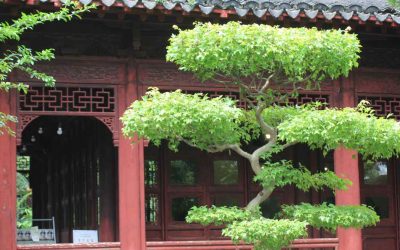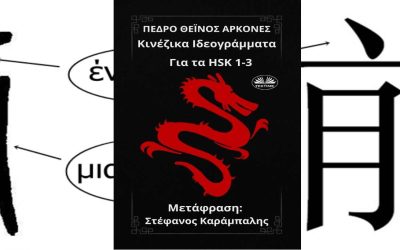Dunhuang in the Silk Road
Dunhuang is a city in the middle of the desert. Over its 2,000-year history, it has always been the last Chinese outpost before reaching the Western Regions—those kingdoms more or less dominated by the imperial regimes, yet showing customs so different from those of the Chinese.
It was part of the empire, but with clear differences.
This has made it a very special city. While it lacks the exoticism of the cities in Xinjiang province, it is far from resembling cities in the rest of China. Its history has been tumultuous; during times when the heart of the country was consumed by endless wars, it served as a refuge for many people seeking peace. It was also, at one point, under Tibetan occupation and later became one of the most important cities in the Western Xia Empire.
In the 20th century, Dunhuang became famous for the discovery of the magnificent Mogao Grottoes and the manuscripts found sealed inside one of them. With their stunning paintings, the grottoes have been called the Sistine Chapel of Buddhist art, but in truth, they are much more than that. More than a dozen of the caves could each be called the Sistine Chapel of Buddhist or Chinese art in their own right.
Mogao Grottoes
People come to Dunhuang mainly to see the grottoes and their frescoes. To protect this treasure and preserve its splendor for future generations, visitors first watch a couple of interesting films at the tourist center, and then take a bus to the grottoes themselves. There, small groups are formed in either English or Chinese, and follow a guide. The guides choose a route of 7 to 10 caves, which they open, explain, and then close again.
The Mogao Grottoes were decorated over many centuries. The oldest caves date back to the Northern Wei Dynasty, while the most recent were created during the Yuan Dynasty—a process that spanned around 1,000 years. In the largest of them, Cave 96, there is a 36-meter-tall statue of Maitreya Buddha. Altogether, the grottoes contain 45,000 square meters of frescoes, as most of the cave walls are fully painted, over 400 temples, and 2,415 sculptures. A truly unique treasure in every sense.
Crescent Lake
A desert experience awaits around Crescent Lake, surrounded by spectacular sand dunes. The large number of visitors, each enjoying their own desert adventure, creates a unique spot where the vast desert meets the energy of modern tourism.
White Horse Pagoda
This is a small pagoda just 12 meters tall, built in the year 384 in honor of the white horse of the monk Kumarajiva, who carried the scriptures that this sage brought to China. Kumarajiva was one of the first translators and Buddhist teachers. He is considered such an extraordinary figure that, according to legend, both in his native Kucha and in China, the emperor forced him to cohabit with several women so that his seed would not be lost.
Xiyun Taoist Temple, built in 1730, is a haven of peace at the back of a beautiful park. Some of its paintings, originally created at the time, are now quite deteriorated. The temple roofs remain notable.
Leiyun Buddhist Temple, though rebuilt in 1989, is vast, with beautifully decorated halls and rooms that attempt to recreate Tang dynasty architecture. At the far back on the left, it includes a small museum of grotto artifacts, including Buddhist scroll paintings that are hard to find elsewhere.
Western Jin Tombs
In reality, there are two tombs: one from 1,900 years ago (Later Han) and the other from 1,700 years ago (Western Xia). Only the entrance bricks are painted. While of interest mostly to specialists, the vast surrounding cemetery—with original modern tombs—makes the visit more broadly appealing. One of the tombs is recreated in the Dunhuang Museum, which should be a must-visit for anyone interested in culture. It mainly contains objects excavated from the tombs and Buddhist artworks.
Surroundings
In the vicinity of Dunhuang, other ancient monuments can still be visited. I usually go to the Yulin Grottoes, with treasures from the Western Xia; the lost city, of which only the walls remain; and the modern sculpture Son of the Earth.
Let us help you plan your visit to Dunhuang—often featured as a highlight in our tailor-made Silk Road itineraries.
About me: I have spent 30 years in China, much of the time traveling and studying this country’s culture. My most popular research focuses on Chinese characters (Chinese Characters: An Easy Learning Method Based on Their Etymology and Evolution), Matriarchy in China (there is a book with this title), and minority cultures (The Naxi of Southwest China). In my travels, I have specialized in Yunnan, Tibet, the Silk Road, and other lesser-known places. Feel free to write to me if you’re planning a trip to China. The agency I collaborate with offers excellent service at an unbeatable price. You’ll find my email below.
Last posts
The Primitivist: The Taoist Philosopher of Simplicity
The Primitivist: The Taoist Philosopher of Simplicity The Taoist classic Zhuangzi is not the work of a single philosopherAnyone who takes a closer look at the foundational works of Taoism will quickly discover that the book known as Zhuangzi was not entirely written...
Zhang Yongzheng, the master of deluding reality
Zhang Yongzheng, the master of deluding reality Reality is an illusion, say Buddhist texts. And each of Zhang Yonggzheng's (Gansu, 1978) works plays with this concept to remind us again and again that there is no immutable reality but a fluid universe of forms that...
The book Hanzi for HSK 1-3 now available in Greek language
The book “Hanzi for HSK 1-3” now available in Greek language This April, the translation of my book Hanzi for HSK 1-3 has been published in the main digital bookstores in Greece. The Greek version of this book, from the pen of Stefanos Karampalis, has been one of...
Portrait of a Mandarin in 1800
Portrait of a Mandarin in 1800 This was the year in which a very interesting book was published, which through 60 portraits, tried to show some aspects of life in China to the western public. A book now in the public domain, from which we adapted "A Mandarin of...
The art of laying out gardens among the Chinese
The art of laying out gardens among the Chinese In the 1740s, William Chambers travelled on three trading voyages to China with the Swedish East India Company. He was the first European to study Chinese architecture methodically. In a book published in 1757, Designs...
The secret treasure of ancient Chinese art
The secret treasure of ancient Chinese art China has a fabulous artistic treasure hidden from the eyes of the public and specialists. It is her best kept treasure, because given the dispersion of its location, the difficulty of conservation and even evaluation and...










